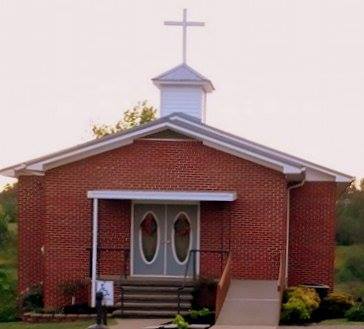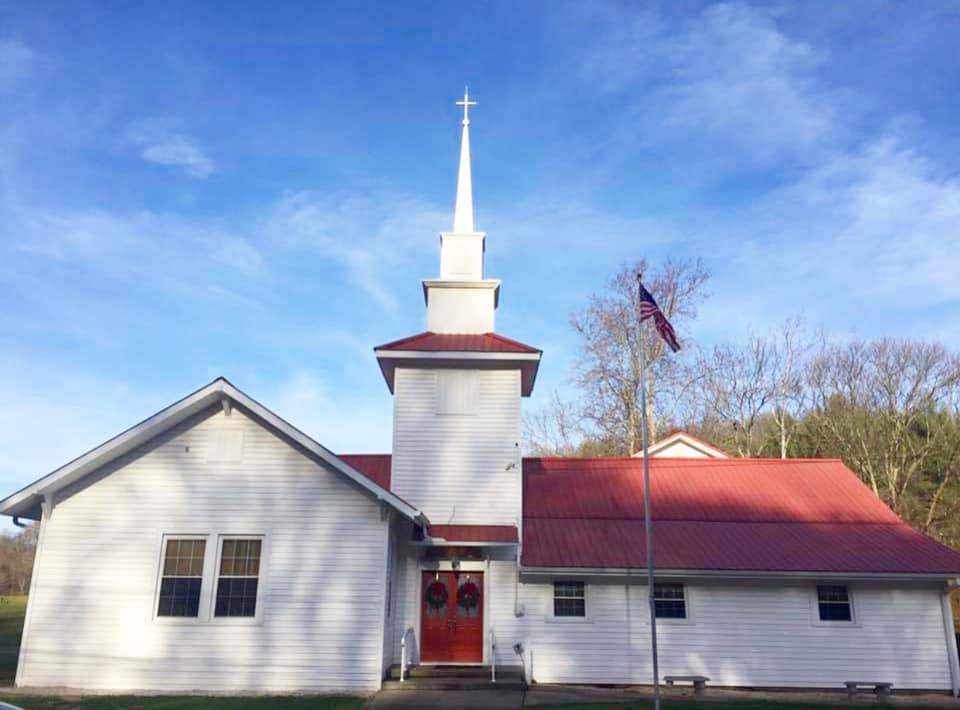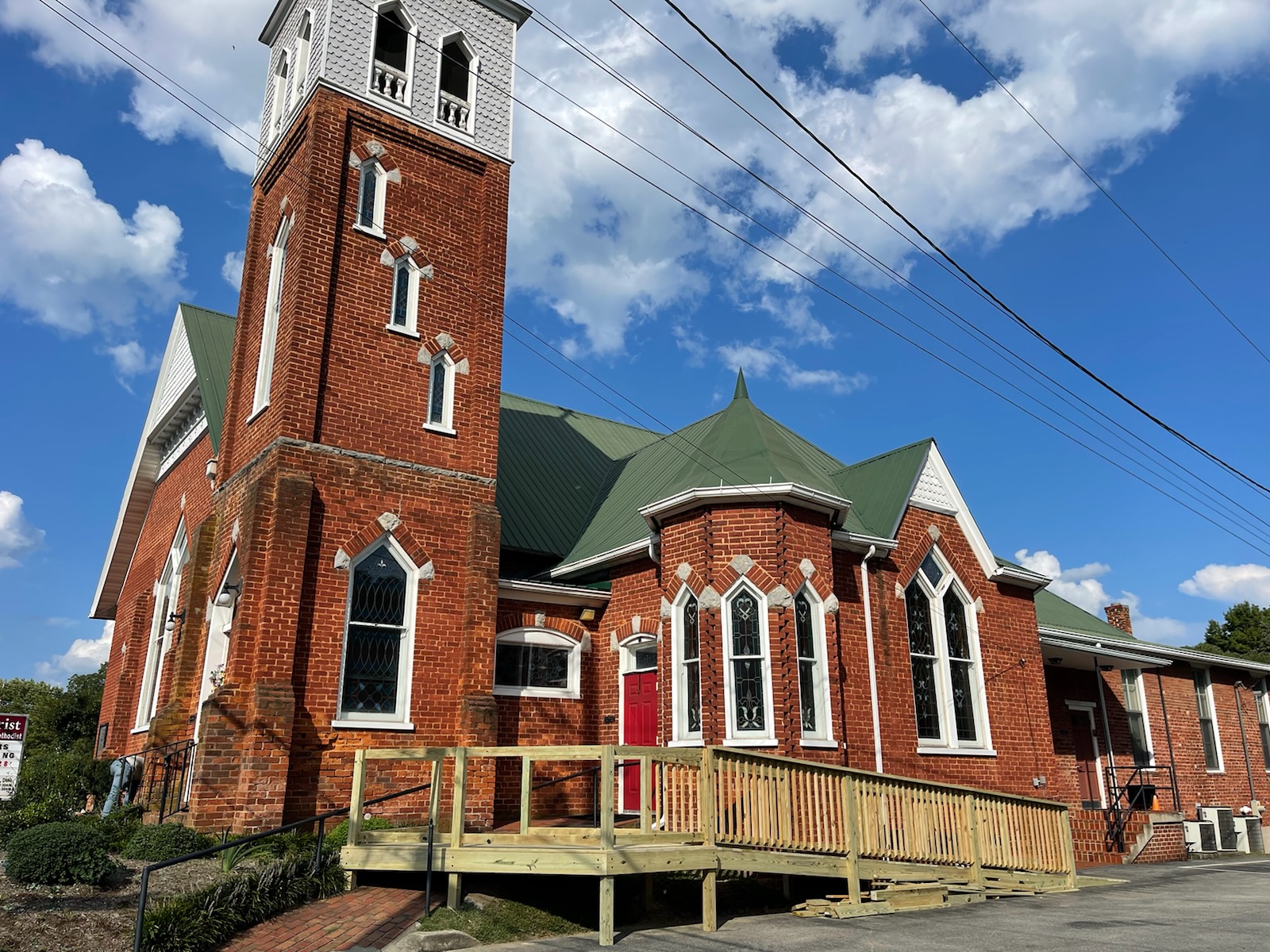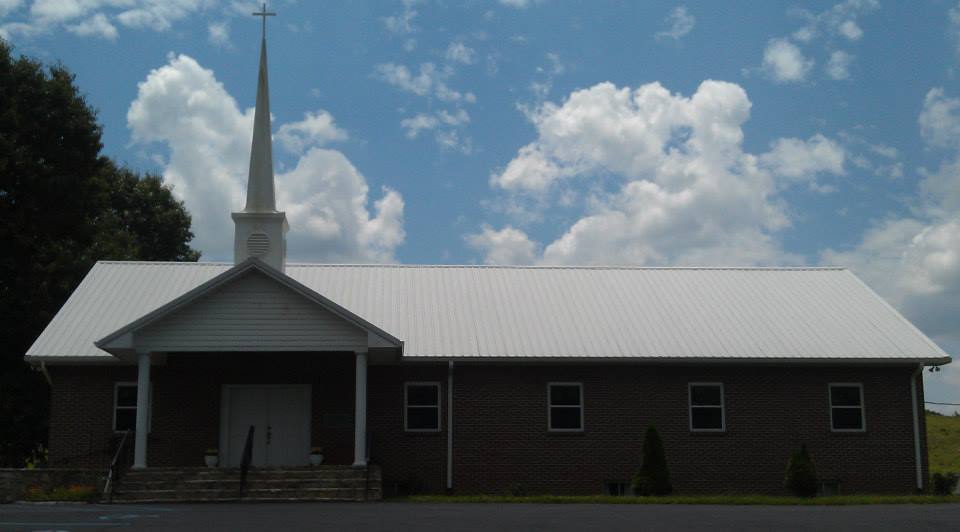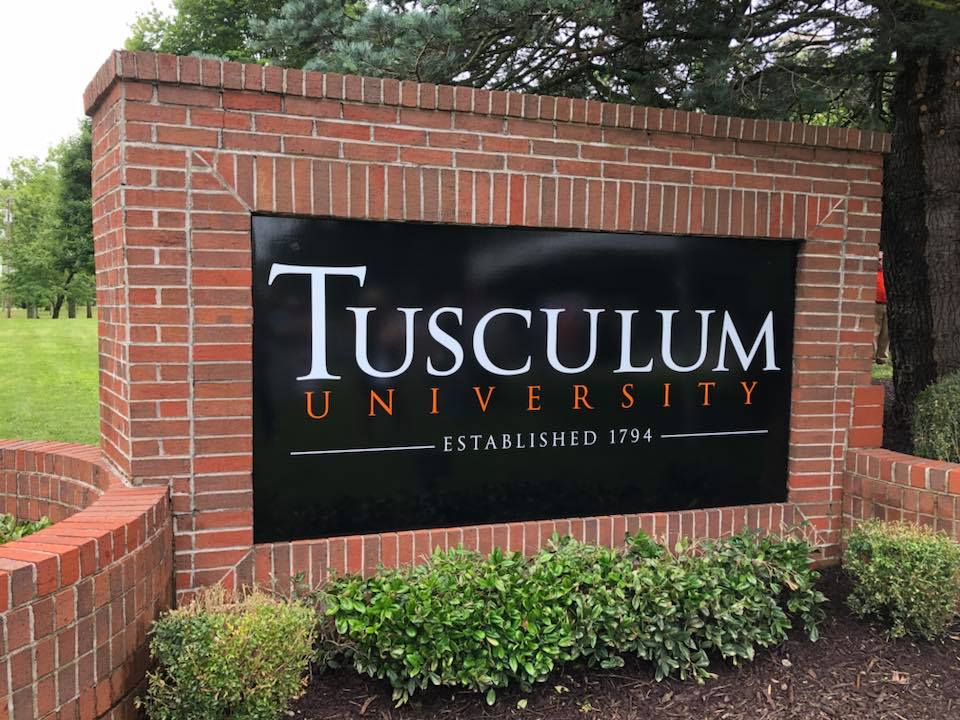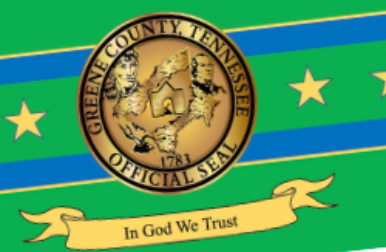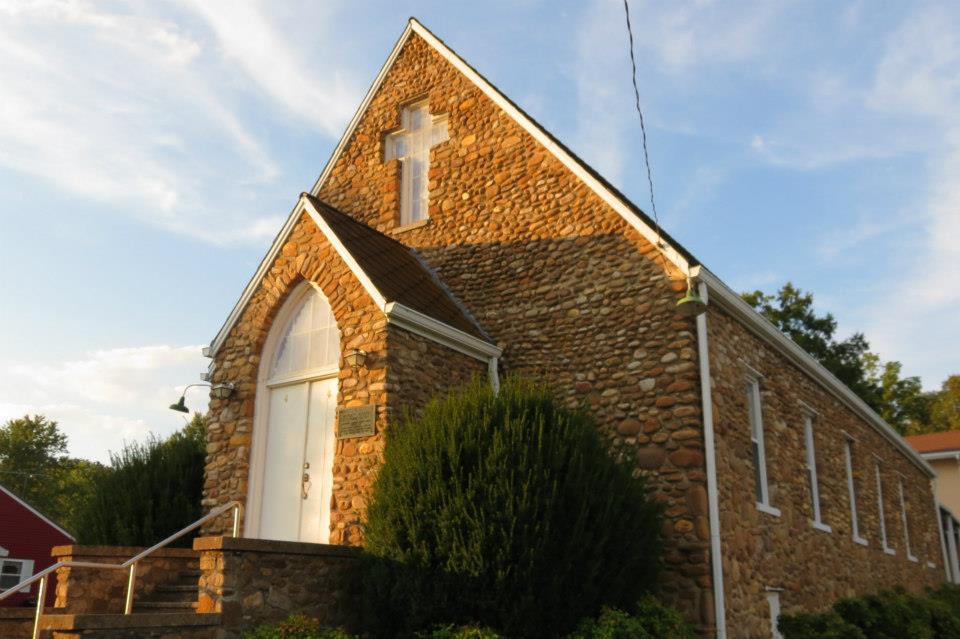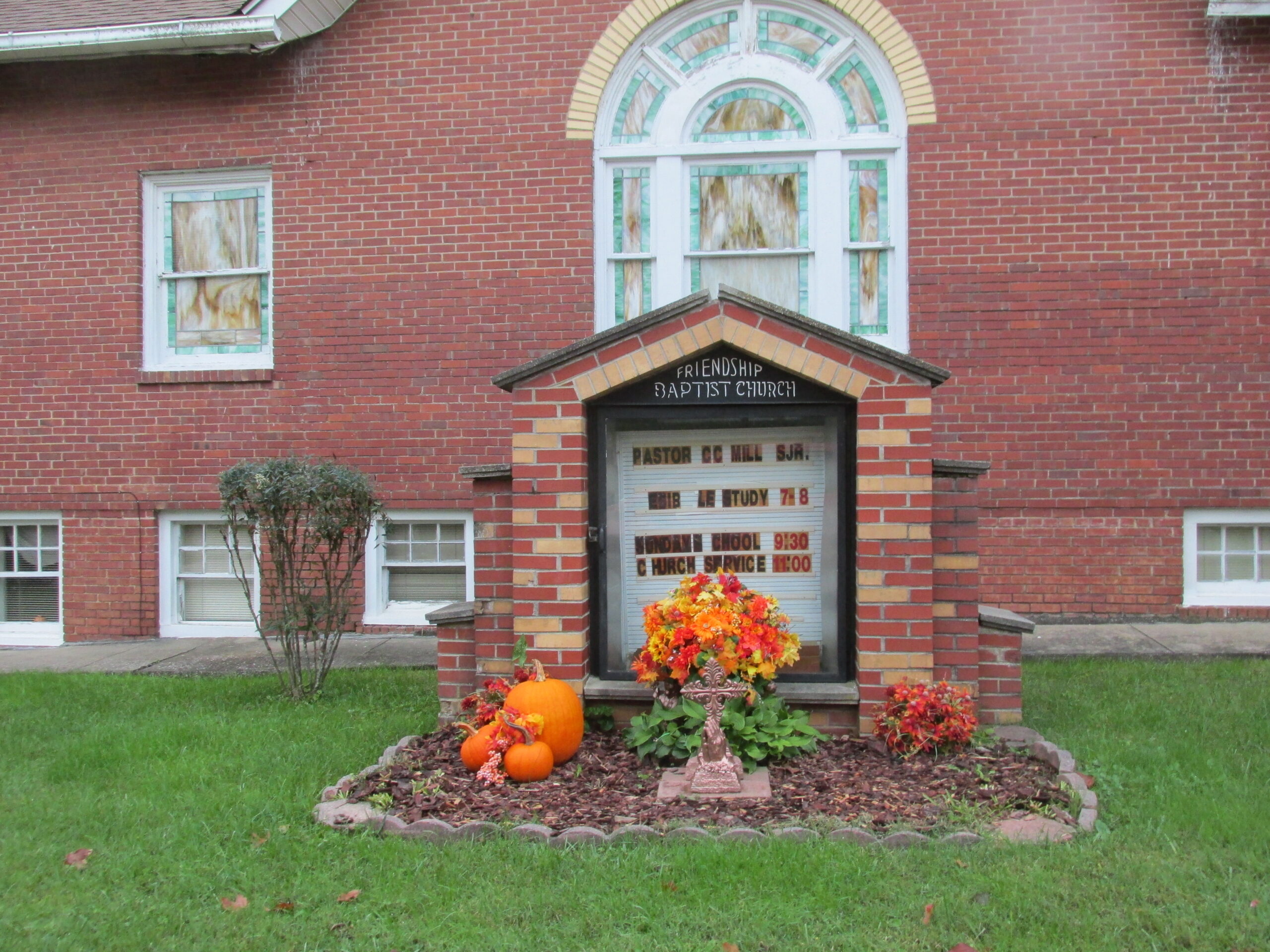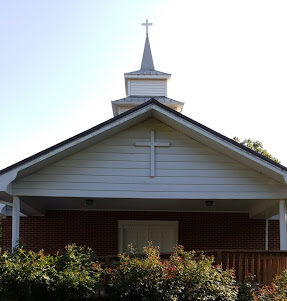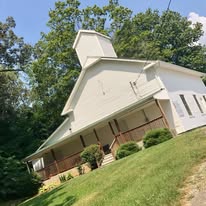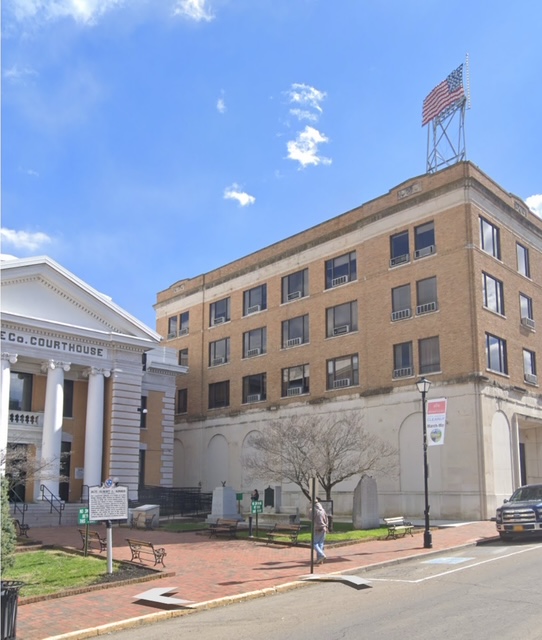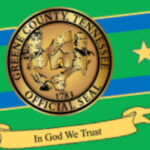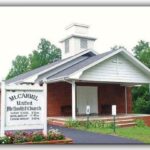Greeneville, Tennessee – The Town of Greeneville is pleased to announce that restoration work to the cupola clock tower that perches atop Town Hall has been completed.
Over the past few years, the cupola suffered wind damage to its windows that allowed water to enter and damage wood mullions and framing. Some leaking was also occurring into the closed attic space of Town Hall and pigeons had moved in, making a mess.
The first step was to secure the openings and safely remove the pigeons and the mess. Next, the Greeneville City Council heard from experts on the issue and weighed the options of replacing the cupola with a fiberglass replica or removing the cupola entirely or restoring the existing wood and windows. The cost of a fiberglass replica was out of budget. Additionally, removing such a recognizable part of Town Hall and the Town of Greeneville was not favored as a viable option.
Ultimately, the Town of Greeneville put out a request for proposals for restoration. In July 2024, the City Council approved a bid for $59,890 from J. Ross Painting and Restoration. Carpentry, painting, partial glass pane replacement, and other restoration work occurred in September 2024.
Separately, The Verdin Company, which has been in the business of bells and clocks since 1842, installed a new digital clock controller and new movement motors for the four clocks in the tower in December 2024 for a cost of $4,800. The total cost for the cupola and clock repair was $64,690.
This restoration has ensured that the cupola and clock tower will grace the Greeneville skyline for many more years to come. The Council would like for Town Hall to be inviting and provide a good impression to its citizens. The Council’s decision to restore such a visible part of the Town is appreciated by Town departments and employees, as it signifies putting our best foot forward. Members of the community, such as the Heritage Trust of Greene County, have also expressed appreciation.
According to the Greeneville Sun, the last time that the cupola and clocks were repaired was 2006. At that time, mechanical clock elements were replaced by electric motors, along with other repairs.
Greeneville Town Hall was designed by architects Honeycutt & Boyd and the general contractor was Bob Smith Construction Company. Bob Reynolds was the superintendent. It is neoclassical in design, borrowing elements from ancient Greece and Rome. It is built from brick and limestone. The building was dedicated on June 9, 1967 by former Greeneville mayor James “Jimmy” Hardin. The Aldermen at the time were Jack Pierce, Pete Luttrell, L.E. Cox, and Buster Holt.
A caption of an aerial view of Town Hall featured in the February 20, 1968 issue of The Greeneville Sun stated that the building was scheduled to be finished in the first part of that year. The caption further stated, “The Towne Hall portion is topped by a tower approximately 25 feet above the roof line, which will frame a clock.”
At the 50th anniversary celebration of Town Hall on May 2, 2017, local historian Wilhelmina Williams stated that the cupola has elements like those of Independence Hall in Philadelphia. Additionally, local historian Tim Massey remarked, “Out of the ashes came the phoenix. It’s a reflection of the spirit of the people.”
On the front of Town Hall, left of the original entrance at the top of the front stairs, there are two plaques. One lists the architects, contractor, and aldermen in 1967. To the left of that, is another small plaque. This one is much smaller and green with patina. It simply says, “MIKE OPINGARI MEMORIAL CLOCK.”
Though a Google search did not return too much about this mystery man named Mike Opingari, reaching out for local help produced some interesting details about him. The T. Elmer Cox Library provided newspaper records about him, and local history buff, Kidwell King, provided remarkable details recalled from his father’s friendship with Opingari.
Printed almost exactly 69 years ago, his obituary from The Greeneville Sun on January 17, 1956 states that Opingari came to the United States East Coast from Albania when he was 17 years old. Based on his birth year of 1895 or 1896, that would have been around 1912 or 1913. After a year in Philadelphia, he made his way to Jellico, Tennessee, and later to Northeast Tennessee, where he spent much of his later years.
Opingari was a successful restauranteur and created quite an impression to those who knew him. According to his letter to the editor in the May 27, 1924 Morristown Gazette Mail, he managed the Busy Bee Café in Morristown at the time. His letter was a thrilling account about capturing a trespasser at the back of the café, and after a fifteen-minute scuffle, delivering him to Policeman Wheeler who happened to be in the café at the time. Years later, there is an account of another scuffle, this time outside of his restaurant on State Street in Bristol called the Dixie Café. In a struggle with a young drunken man, Opingari accidently shot himself with his own gun that was in his pocket. The injury was not life-threatening.
Opingari was fiercely patriotic to the United States. During the time he owned the Dixie Café, he was recognized in the June 28, 1945 Bristol Herald Courier for holding $24,000 in war bonds. He was awarded the Third Army’s five-star insignia of “General of the Armies.” In the article, he was quoted as saying he purchased them, “with every penny I could get hold of.”
Opingari lived in Greeneville for several years, owning Mike’s Café on Depot Street, near the intersection of Irish Street. He was good friends with James “Jimmy” Hardin, former Greeneville Mayor, and Kyle K. King (Kidwell King’s father), who was a prominent attorney.
Upon Opingari’s death in 1956 from an acute heart attack at age 61, he left $1,000 to the Nolachuckey Boy Scout Council of Greeneville and $500 to the Greene County, Tennessee Red Cross Chapter. There were other individuals and organizations bequeathed in his will, but the story of how his name ended up on the front of Greeneville Town Hall is a little more convoluted.
Opingari provided on-going funds from his estate for his wife and her sister, who still lived on his farm in Berat, Albania. The will stated that after his wife’s death, he wanted his wealth to transfer to Albania to build and maintain a park called the “Mike Opingari Park” on his land. However, Albania was Communist at the time and behind the Iron Curtain, so this type of request could not be honored. The country did not even recognize citizens owning land.
Provisions in the will provided that if the Park was not able to be created within three years of his wife’s death, then the money would go to the Town of Greeneville, Tennessee for a similar purpose. Eventually, this is what happened. Though the money did not go toward building a park in his name, it was used to name a clock in the Town Hall building that his friend, James Hardin, fought to build in 1967. Opingari’s friend, Kyle K. King, who was also his attorney, is to be credited for following through with this complicated probate. Over ten years passed between Opingari’s death and the new Town Hall being dedicated in 1967 with the clocks named for him.
There is a colorful and interesting life to remember in Mike Opingari, especially in his great love for the United States and for Greeneville, Tennessee, and his generosity for both.
Greeneville Town Hall is located at 200 N College Street.









